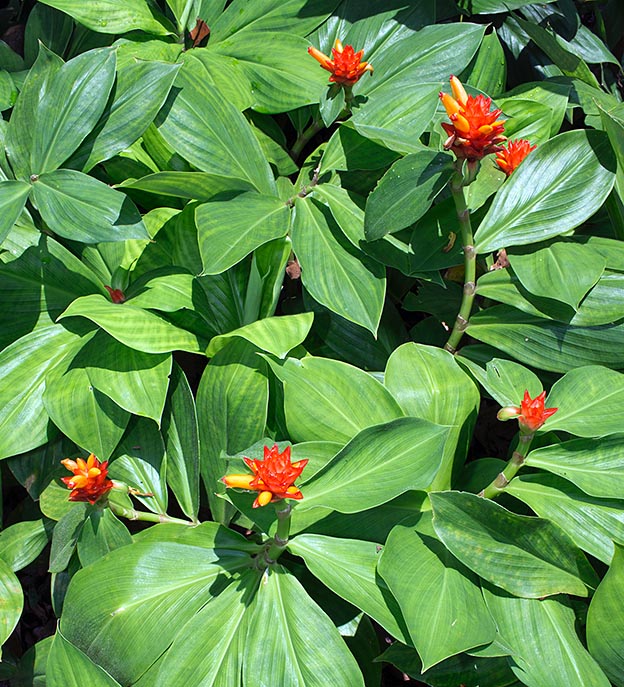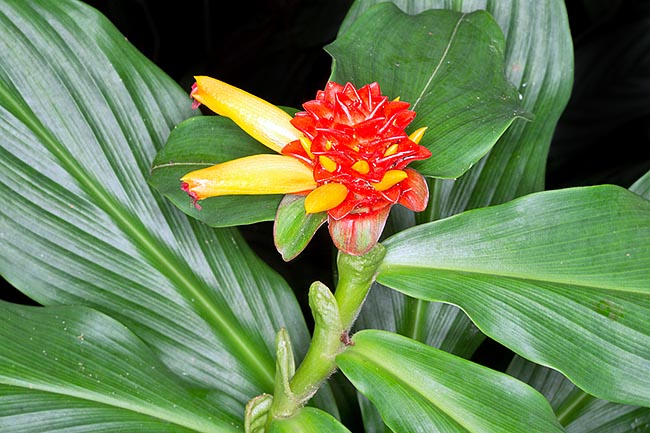Family : Costaceae

Text © Pietro Puccio

English translation by Mario Beltramini

Costus productus, native to Peru, is an ornamental tropical plant © Giuseppe Mazza
The name of the genus was given by Linaneus in deference to Dioscorides who has described a plant, deemed similar, with the name of Kostos; the name of the species is the Latin adjective “productus, a, um” = prolonged, with reference to the relatively long callus of the bracts.
Common names: dwarf orange ginger, dwarf spiral ginger, orange costus ginger, orange spiral ginger, spiral ginger (English).
The Costus productus Gleason ex Maas (1976) is an evergreen, perennial rhizomatous herbaceous species, with 0,6-1,2 m tall stems with closed tubular sheath of green colour and about 2 cm long ligula.
The leaves, spirally arranged, are simple, entire, obovate with pointed apex, 16-25 cm long and 6-10 cm broad.
Ovoid terminal inflorescences 5-10 cm long formed by ovate imbricate bracts of bright orange red colour, up to 2,5 cm long, with pointed appendix and callus (hardened extremity) 0,6-1,2 cm long, which enclose a tubular hermaphroditic flower, up to about 5 cm long, of pale yellow to orange yellow colour. The flower is formed by the calyx, about 1 cm long, with three almost triangular lobes, corolla with about 1 cm long tube and three oblong lobes 3,5-4 cm long and 1 cm broad, 3,5 long fertile stamen and tubular labellum, formed by the merged sterile stamina, 3-3,5 cm long, orange red at the extremity; the pollination is ornithophilous.
It reproduces by seed, previously kept in water for 1-2 days, in loam rich of humus with addition of sand or perlite per a 30%, kept humid, at the temperature of 22-26 °C, by division and by portions of stem, placed horizontally under a thin layer of loam, at the temperature of 22-24 °C.

Ovoid flamboyant 5-10 cm tall inflorescences and edible tubular 5 cm flowers © Giuseppe Mazza
It requires partially shaded position and soils rich of organic substance, draining, kept constantly humid, but without stagnations; due to its contained size is ideal as soil cover and for edgings, as well as isolated specimen. Cultivable also in pot for the decoration of luminous interiors, with lowest temperature preferably not less than 15 °C, utilizing an organic substratum with addition of siliceous sand or perlite per a 30%, for improving the drainage; the watering must be regular and abundant in summer, more spaced in winter, but without ever allowing the substratum to dry up completely. The fertilizations must be done during the vegetative period with hydro-soluble balanced products with microelements. The flowers are edible and are at times consumed in salads whilst the cut inflorescences are utilized in the floral compositions.
→ To appreciate the biodiversity within the family COSTACEAE please click here.
